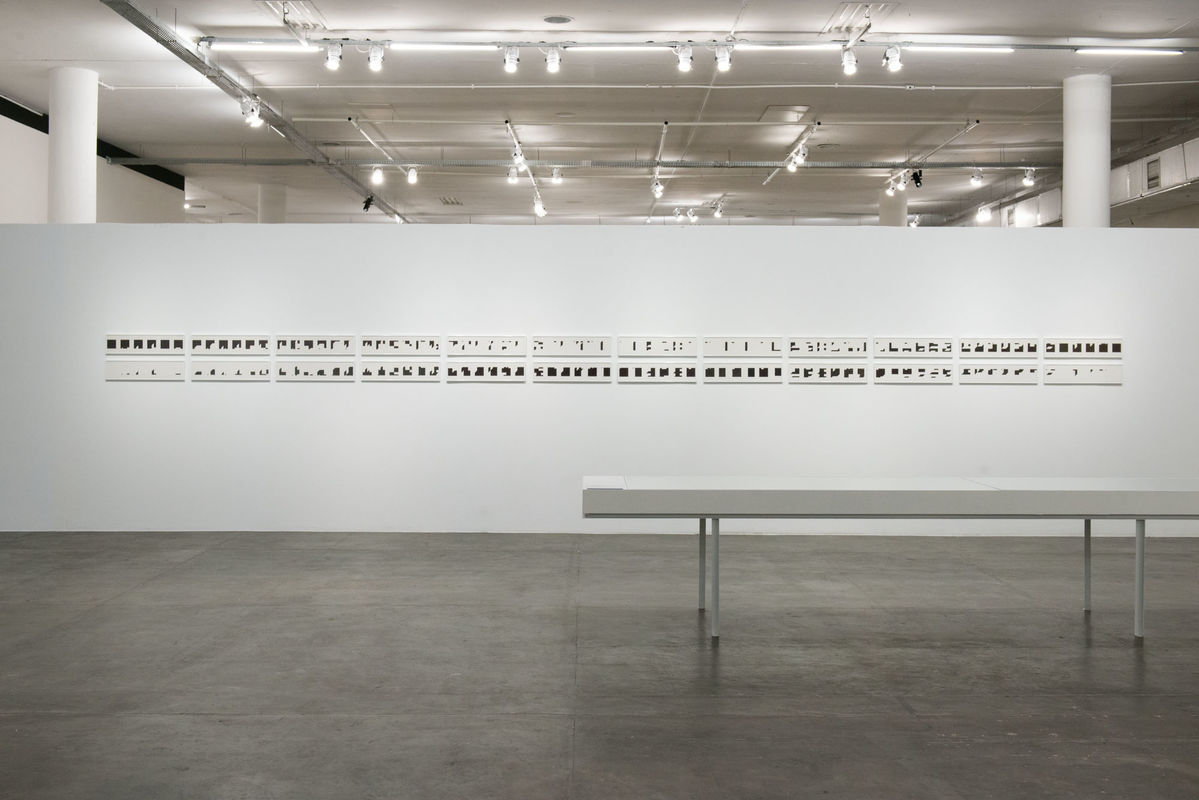
Elena Asins
In the late 1960s, Elena Asins began drawing structures that unfold silently on a two-dimensional surface; at times the Spanish artist developed a modulated element based on a specific sequence and rhythm, requiring the viewer to make a mental reconstruction that stretched and expanded the limit of the paper ad infinitum. The line – the development of a point – discovers its dimensional potential by turning, by pivoting: does it dance, does it sound? In fact, for Asins, what is drawn is as relevant as what is thought and not said, connected as it is to Wittgenstein’s thought.
She herself pointed out the crossover of her work with music (beyond the literalness of titles that evoke Mozart’s Prussian Quartets or the structure of Bach’s canon). According to Javier Maderuelo: “Her art is musical not only because her plastic forms have a relationship of structural similarity with certain compositional developments in music, but also because, as music is immaterial, it is pure mental process.”¹
If, at least since classical Greece, music has been written with signs to be interpreted – notes that are mute for the non-literate – literacy is superfluous in Asins’ work, as its signs lack a consensual code; its disciplined structures, developed with rigour, allow them to be translated into concept, thus expanding the authorship towards the reader. They are visual poems, or scores – conceived in a performative, open and sonorous sense that comes from Fluxus – in which space and time are made visible with very simple, almost slight linguistic signs, inscribed in black and white in a minimalist way: because nothing more is needed. In fact, in 2023, Cantos de Orfeo (1970), an unpublished score dedicated to the artist Eusebio Sempere, was performed for the first time in Spain by the Trío Poesía Acción H,GLAJERU;G and the CoroDelantal. Signs embodied in bodies that sound and move in space and time.
isabel tejeda
translated from Spanish by ana laura borro
Elena Asins (Madrid, Spain, 1940 – Azpíroz, Spain, 2015) was an artist, writer, and art critic. She held over forty solo exhibitions in various countries and wrote and published essays on aesthetic and experimental poetry in publications specialized in art from Spain, France, Germany, and the United States. Her works are part of the collection of the Museo Reina Sofía (Madrid, Spain).
This participation is supported by Acción Cultural Española (AC/E) and Embajada de España en Brasil.
1. Javier Maderuelo, “Menhir dos”, in Elena Asins: Menhir dos. Ayuntamiento de Madrid, 1995.

 Português
Português